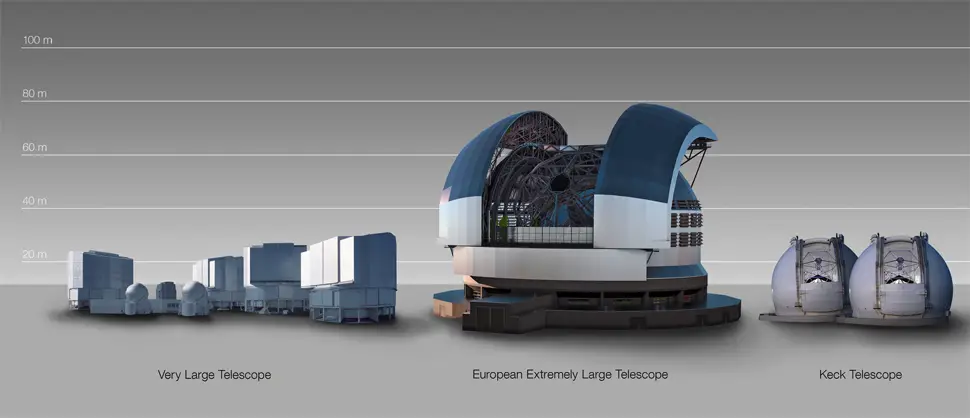
2nd June 2017 Construction begins on the European Extremely Large Telescope The largest optical and infrared telescope ever to be built is on track for operation in 2024. It will feature 256 times the light gathering area of the Hubble Space Telescope and provide images 16 times sharper.
A ceremony marking the first stone of the Extremely Large Telescope (ELT) has been attended by President of Chile, Michelle Bachelet Jeria. The event was held at the European Southern Observatory's (ESO) Paranal Observatory in northern Chile, close to the site of the future telescope. This milestone marked the beginning of construction of the dome and main structure of the world's biggest optical telescope, ushering in a new era in astronomy. In her speech, the President emphasised: "With the symbolic start of this construction work, we are building more than a telescope here: it is one of the greatest expressions of scientific and technological capabilities and of the extraordinary potential of international cooperation." Tim de Zeeuw, Director General of ESO, thanked the President and her Government for their continuing support of ESO in Chile and their protection of the country's unequalled skies: "The ELT will produce discoveries that we simply cannot imagine today, and it will surely inspire numerous people around the world to think about science, technology and our place in the Universe," he said. "This will bring great benefit to ESO Member States, to Chile, and the rest of the world."
With a main mirror 39 m (128 ft) in diameter, the Extremely Large Telescope (ELT) will be the largest optical/infrared telescope in the world and will take telescope engineering into new territory. It will be housed in a gigantic rotating dome 85 m (279 ft) in diameter – comparable in area to a football pitch. This will provide 256 times the light gathering area of the Hubble Space Telescope and generate images 16 times sharper. The ELT site was donated by the Government of Chile, and is surrounded by a further large concession of land, protecting the future operations of the telescope from interference of all kinds – and helping to retain Chile's status as the astronomy capital of the world. The ELT will be the biggest "eye" ever pointed towards the sky and may revolutionise our perception of the Universe. It will study the atmospheres of extrasolar planets and look for signs of alien life, study the nature of dark energy and dark matter, and observe the Universe's early stages to explore our origins. Its suite of instruments will allow astronomers to probe the earliest stages of the formation of planetary systems and to detect water and organic molecules within protoplanetary discs around stars in the making. Thus, the ELT will answer fundamental questions regarding the formation and evolution of planets. By probing the most distant bodies, the telescope will provide clues to understanding the formation and relationship of the first objects that appeared in the universe: primordial stars, primordial galaxies and black holes. One of the more ambitious goals of the ELT is the possibility of making a direct measurement of the acceleration of the Universe's expansion. This could have a major impact on our understanding of the Universe. It will also look for variations in fundamental physical constants. An unambiguous detection of such variations would have far-reaching consequences for our comprehension of the general laws of physics. The ELT could raise entirely new questions that we cannot conceive of today – as well as improving life here on Earth through new technology and engineering breakthroughs. First light is planned for 2024.
---
Comments »
|









